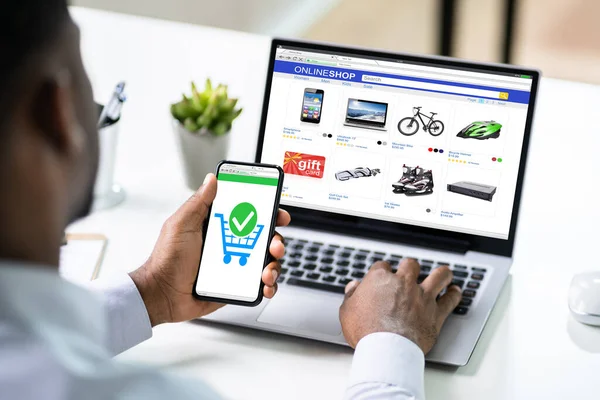In today’s fast-paced digital world, starting an online store is one of the smartest moves you can make, no matter your age or background. Whether you’re a Gen Z tech-savvy entrepreneur or someone looking to turn a side hustle into a full-time gig, e-commerce offers endless opportunities to transform your ideas into a successful business. The beauty of online retail is that it removes the traditional barriers—anyone with passion, drive, and the right tools can build a thriving brand from scratch.
Looking to Master the E-Commerce Game,This guide will walk you through the key steps to help you launch, grow, and scale your online store, so you can stand out in an increasingly competitive market.
Step 1: Find Your Niche and Audience
Let’s be real—anyone can set up an online store. But standing out? That’s where the magic happens. The first thing you need to do is figure out what makes you unique in the crowded online marketplace.
- What’s Your Passion? Do you geek out over eco-friendly fashion? Obsessed with gadgets? Make sure your product speaks to something you care about. It’s way easier (and way more fun) to sell what you love.
- Research, Research, Research: Scroll through Instagram, dive into TikTok, and check trending products on platforms like Etsy or Amazon. Find out where there’s a gap, and fill it!
- Know Your Tribe: Who’s your ideal customer? Maybe it’s eco-conscious Gen Zers who are tired of fast fashion, or techies looking for the next must-have gadget. Nail down who you’re talking to and speak their language.
- Spy on Competitors: Check out what others are doing in your space. What are they getting right? And where are they dropping the ball? This will give you insights into how you can stand out.
Step 2: Build a Brand that Pops
Your brand isn’t just a logo—it’s how you make people feel. It’s the story you’re telling with every product, Instagram post, and email you send out.
- Your Brand Story: What’s your mission? Are you the brand that’s saving the planet with sustainable products? Or maybe you’re helping busy college students find simple skincare routines. Whatever it is, make sure your “why” shines through in every piece of content.
- Visual Vibes: Get a killer logo, choose colors that reflect your vibe (calm, energetic, bold), and pick fonts that fit your tone. Keep it consistent, whether you’re posting on TikTok or running ads on Instagram.
- Consistency is Key: Make sure your tone and messaging match across platforms. Whether you’re replying to a comment or sending an email, your audience should recognize your style instantly.
Step 3: Pick the Perfect E-Commerce Platform
You don’t need to be a tech genius to launch a store, but you do need a platform that’s easy to manage and scales as you grow.
- Go Simple: Shopify is a popular go-to because it’s user-friendly and has tons of features, but there are plenty of other platforms like WooCommerce or BigCommerce if you want more control.
- Growth Potential: Think long-term. Will your platform handle thousands of orders if your product goes viral? Choose one that won’t hold you back.
- Budget-Friendly: Look at your budget carefully and choose a plan that fits your needs. Most platforms offer different tiers, so you can start small and upgrade as your business grows.
Step 4: Master Product Sourcing and Inventory
So, what are you selling? Whether it’s hand-crafted jewelry, custom-designed hoodies, or the latest gadgets, sourcing high-quality products is key.
- Get Suppliers You Trust: Don’t just rely on the first supplier you find. Research and order samples before committing. Quality matters!
- Inventory vs. Dropshipping: Not sure if you’re ready to manage inventory? No problem. Dropshipping can be a great option—no need to stock up on products, and you don’t pay for anything until you sell it.
Step 5: Craft Killer Product Listings
You’ve got the goods—now show them off in style. Make your product listings so compelling that people can’t help but click “Add to Cart.”
- Photos Matter: Invest in professional photography or get creative with your phone and some great lighting. High-quality photos build trust.
- Tell a Story: Product descriptions aren’t just about features. Tell the customer how this product will change their life, even in small ways. Is your water bottle helping them save the planet? Is that hoodie the perfect comfort on a chilly night?
- Use Keywords: SEO isn’t as scary as it sounds. Sprinkle relevant keywords into your product titles and descriptions so people find your store when they’re Googling.
Step 6: Get Found with SEO
It’s one thing to have a great store—but can people find you? SEO (Search Engine Optimization) helps your store show up when people search for products like yours.
- Keywords Are King: Do some research on what terms your audience is searching for and use those in your product titles, descriptions, and even blog posts.
- Speed is Everything: Make sure your website loads quickly. Slow websites lose customers fast.
- Mobile-Friendly: Your Gen Z audience lives on their phones. Make sure your store looks as good on mobile as it does on desktop.
Step 7: Social Media Is Your Best Friend
Gen Z knows better than anyone: social media isn’t just for scrolling—it’s a goldmine for marketing your online store.
- Choose Your Platforms: Where does your audience hang out? Instagram? TikTok? Pick the platforms that work for your brand, and focus on killer content there.
- Influencers & Collabs: Partner with influencers in your niche to get your products in front of a wider audience. Even micro-influencers can have a big impact.
- Paid Ads: Once you’ve got some momentum, try running targeted ads. Platforms like Instagram and TikTok make it easy to reach the right people.
Step 8: Build Strong Customer Relationships
Building trust with your customers isn’t optional—it’s essential. Repeat customers are the lifeblood of any e-commerce business.
- Keep It Personal: Send personalized emails thanking your customers for their purchase. Let them know you appreciate them.
- Build a Community: Create loyalty programs, offer special discounts for repeat buyers, and foster a community where your customers feel valued.
Step 9: Analyze and Adapt
You don’t need to be a data nerd to benefit from analytics, but paying attention to the numbers will help you grow.
- Track Sales: What products are flying off the shelves? What’s sitting there gathering dust? Use this info to make better business decisions.
- Optimize Constantly: Don’t be afraid to experiment. Try out new strategies, tweak your pricing, and update your website design to see what works best.
Starting an online store may feel overwhelming, but with a little focus, some creativity, and these actionable tips, you’re already on your way. The e-commerce landscape is vast, but for Gen Z, the opportunity to carve out your own space has never been better. Get out there, take risks, and turn your vision into a thriving online business



